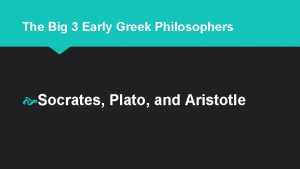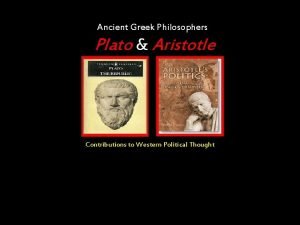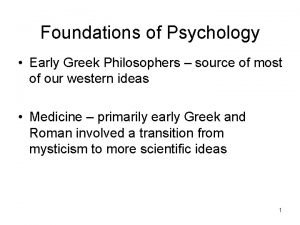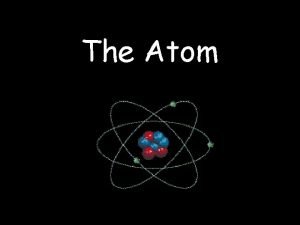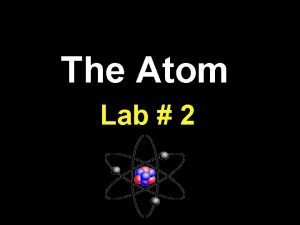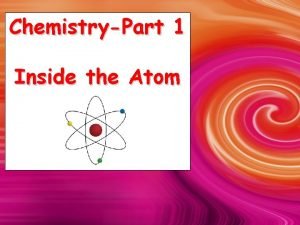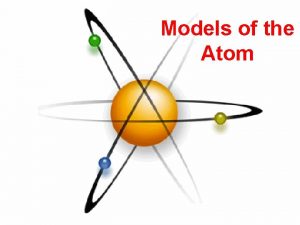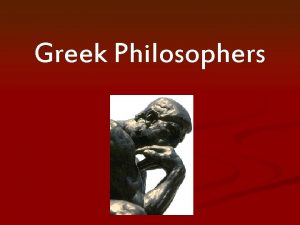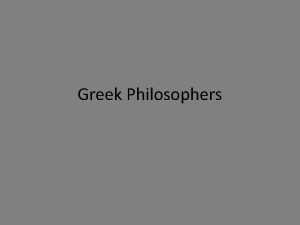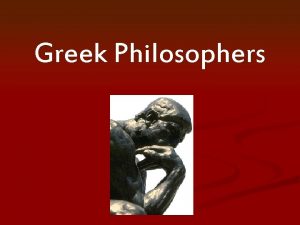Chapter 14 Inside the Atom A Greek philosophers











- Slides: 11

Chapter 14: Inside the Atom

A. Greek philosophers devised a theory of atoms, or tiny particles Democritus, 400 BC: said all things are composed of tiny particles called “atomos” that cannot be cut into smaller pieces

B. John Dalton combined the idea of elements with the Greek theory of the atom 1. Matter is made up of atoms 2. Atoms cannot be divided into smaller pieces

3. All atoms of an element are exactly alike 4. Different elements are made of different atoms

5. Dalton’s theory was tested by William Crookes and his cathode-ray tube experiment William Crookes, British chemist; cathode-ray tube experiment, 1870

C. J. J. Thomson discovered negatively charged particles, electrons, which are part of every atom. 1. Thomson revised Dalton’s model to include a sphere with a positive charge and negatively charged electrons spread evenly within the positive charge.

2. The negatively charged electrons and the positive charge in the sphere neutralized each other. “plum pudding” or “cookie dough” model

D. Earnest Rutherford tested Thomson’s model, which was found to be an inaccurate model of the atom

E. An atomic model with a nucleus was developed. 1. The positively charged proton is located in a very small space at the center of the atom. 2. Most of the atom is empty space occupied by nearly massless electrons.

3. Electrically neutral particles, neutrons, are also in the nucleus. 4. The number of electrons equals the number of protons in an atom.

F. The electron cloud model explains the unpredictable wave behavior of electrons, which could be anywhere surrounding the nucleus.
 3 greek philosophers
3 greek philosophers Physical education in sparta
Physical education in sparta The three greek philosophers
The three greek philosophers Greek philosophers ethics
Greek philosophers ethics Aristotle contribution
Aristotle contribution Ancient greece jeopardy
Ancient greece jeopardy Early greek philosophers in psychology
Early greek philosophers in psychology What's inside atoms
What's inside atoms Whats a nuclide
Whats a nuclide Whats inside an atom
Whats inside an atom The structure of the atom section 2 defining the atom
The structure of the atom section 2 defining the atom Kelemahan teori atom bohr
Kelemahan teori atom bohr
